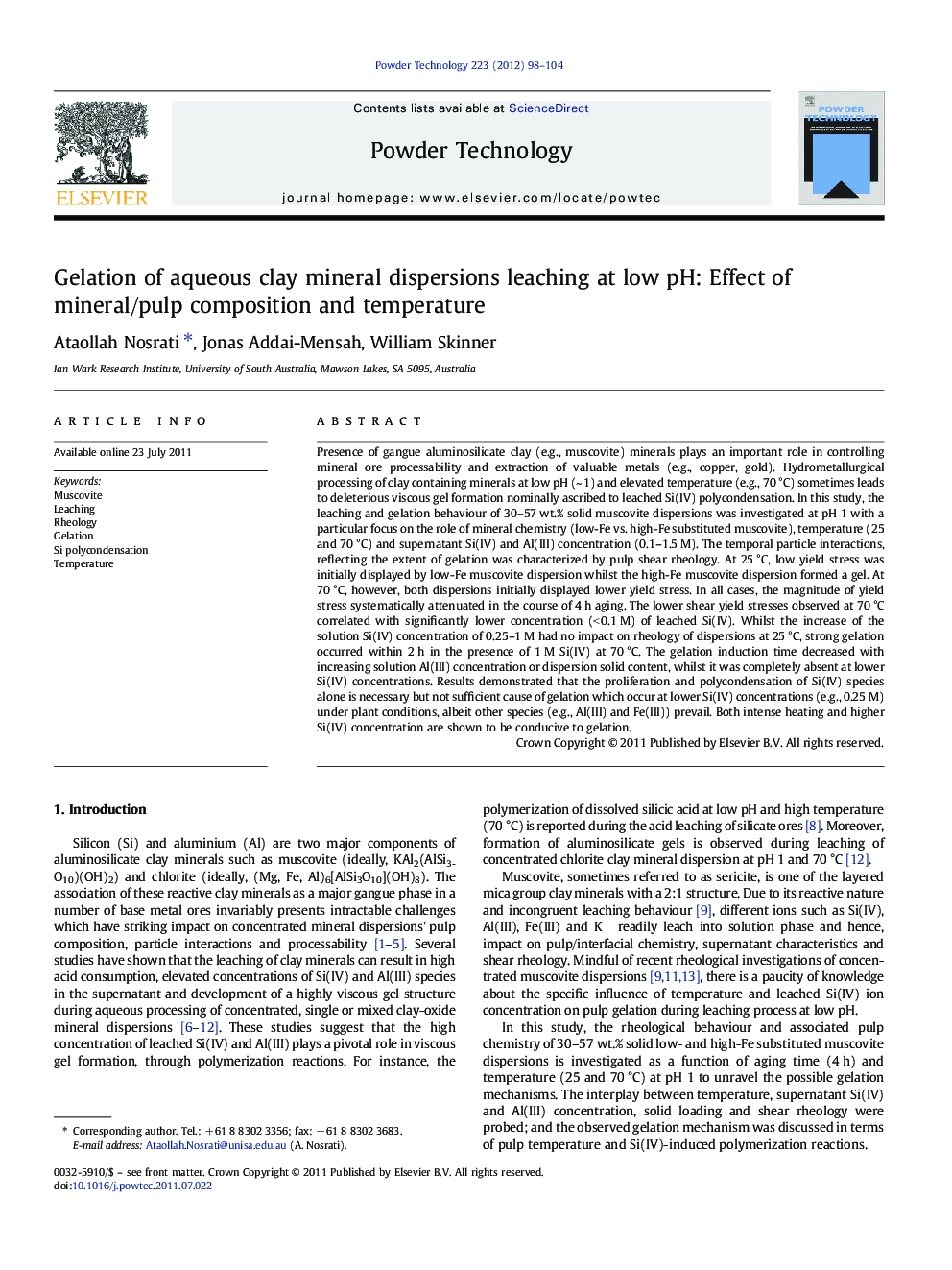| کد مقاله | کد نشریه | سال انتشار | مقاله انگلیسی | نسخه تمام متن |
|---|---|---|---|---|
| 237278 | 465699 | 2012 | 7 صفحه PDF | دانلود رایگان |

Presence of gangue aluminosilicate clay (e.g., muscovite) minerals plays an important role in controlling mineral ore processability and extraction of valuable metals (e.g., copper, gold). Hydrometallurgical processing of clay containing minerals at low pH (~ 1) and elevated temperature (e.g., 70 °C) sometimes leads to deleterious viscous gel formation nominally ascribed to leached Si(IV) polycondensation. In this study, the leaching and gelation behaviour of 30–57 wt.% solid muscovite dispersions was investigated at pH 1 with a particular focus on the role of mineral chemistry (low-Fe vs. high-Fe substituted muscovite), temperature (25 and 70 °C) and supernatant Si(IV) and Al(III) concentration (0.1–1.5 M). The temporal particle interactions, reflecting the extent of gelation was characterized by pulp shear rheology. At 25 °C, low yield stress was initially displayed by low-Fe muscovite dispersion whilst the high-Fe muscovite dispersion formed a gel. At 70 °C, however, both dispersions initially displayed lower yield stress. In all cases, the magnitude of yield stress systematically attenuated in the course of 4 h aging. The lower shear yield stresses observed at 70 °C correlated with significantly lower concentration (< 0.1 M) of leached Si(IV). Whilst the increase of the solution Si(IV) concentration of 0.25–1 M had no impact on rheology of dispersions at 25 °C, strong gelation occurred within 2 h in the presence of 1 M Si(IV) at 70 °C. The gelation induction time decreased with increasing solution Al(III) concentration or dispersion solid content, whilst it was completely absent at lower Si(IV) concentrations. Results demonstrated that the proliferation and polycondensation of Si(IV) species alone is necessary but not sufficient cause of gelation which occur at lower Si(IV) concentrations (e.g., 0.25 M) under plant conditions, albeit other species (e.g., Al(III) and Fe(III)) prevail. Both intense heating and higher Si(IV) concentration are shown to be conducive to gelation.
Intense heating and higher concentration of leached Si(IV) in aqueous phase are shown to be conducive to gelation during leaching of muscovite clay mineral dispersions at pH 1.Figure optionsDownload as PowerPoint slideHighlights
► Influential role of mineral composition and temperature on muscovite clay's leaching behaviour.
► Leach slurry ions' type/concentration, temperature and pulp gelation relationships.
► Pivotal role of temperature and leach slurry Si(IV) concentration in pulp gelation.
► Kinetics of Si(IV)-mediated polycondensation reactions conducive to pulp gelation.
Journal: Powder Technology - Volume 223, June 2012, Pages 98–104